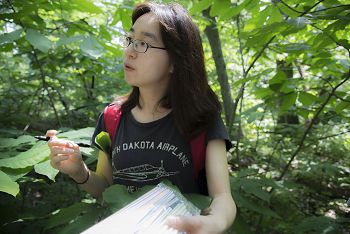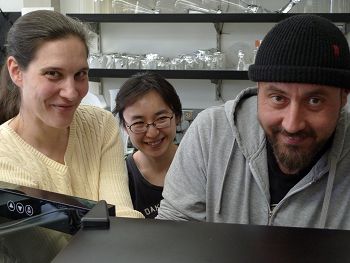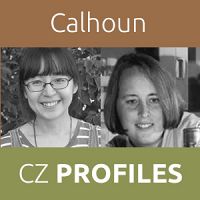Critical Zone Profile - KYUNGJIN (KJ) MIN (soil ecologist, PhD student)
Although microorganisms cannot be seen with the naked eye, they play an important role in mediating the cycling of key nutrients, such as carbon and nitrogen. Microbial CO2 respiration represents up to 60 percent of soil respiration on the planet—significantly contributing to anthropogenic CO2 emission and climate change. Yet, we still do not know how changing environments will influence microbially-mediated nutrient cycling. KJ Min’s work in the Calhoun CZO investigates the effects of environmental changes on microbial activities in soils, in order to better predict future microbial activities in a changing climate.
“In Asian cultures, we view nature as a balanced system with human society, which I think reflects the very essence of critical zone science.” —KJ Min
I grew up in Seoul, which has been the capital city of South Korea for 700 years. Despite rapid urbanization, Seoul is still surrounded by mountains with rivers running through it—maintaining its legacy from our ancestors’ feng-shui system. I find it interesting to study how ecosystems are still able to maintain their functions under changing conditions, such as have occurred in Seoul.
In particular, I study how soil microorganisms respond to environmental changes, such as increasing temperatures and alterations in land use. In general, microbial respiration increases with warming. However, it is unclear what drives increasing microbial respiration. I am hoping to determine if the increasing respiration is due to increases in microbial biomass or to shifts in microbial physiology and community structure.
To study microbial activities and community structure, I use a suite of scientific techniques including gas chromatography, carbon stable isotope analysis, and DNA sequencing. Gas chromatography detects the concentration and type of greenhouse gases, such as carbon dioxide, methane, and nitrous oxide. Carbon stable isotope analysis helps us understand how carbon moves from one molecule/location to another molecule/location, enabling us to elucidate carbon metabolism. I also use DNA sequencing to characterize what kind and how many soil microorganisms exist in specific environmental conditions.
KJ (in the middle) working with Professor Sharon Billings and Research Associate Christoph Lehmeier on a lab project to explore microbial carbon flows.
We can live a daily life without thinking about the critical zone, but without it, we cannot live. To me, it is therefore of importance to understand how the critical zone works.
The critical zone network is not comparable to other networks, because it represents a wide variety of ecosystems and disciplines, which are indispensable to our work. Critical Zone Observatories foster a better understanding of natural resources by providing an open platform through which people from different backgrounds can talk. Thanks to CZO program, I had an opportunity to visit a CZ observatory in Australia this past summer. This experience expanded my view of soils and allowed me to develop the kind of cross-cutting perspective which any critical zone scientist should have. I hope that such international collaboration among CZO sites will continue.
:: By Linda Copman, staff writer ::
Kyungjin (KJ) Min, Soil Ecologist
KJ (in the middle) working with Professor Sharon Billings and Research Associate Christoph Lehmeier on a lab project to explore microbial carbon flows.
Related News
Explore Further







